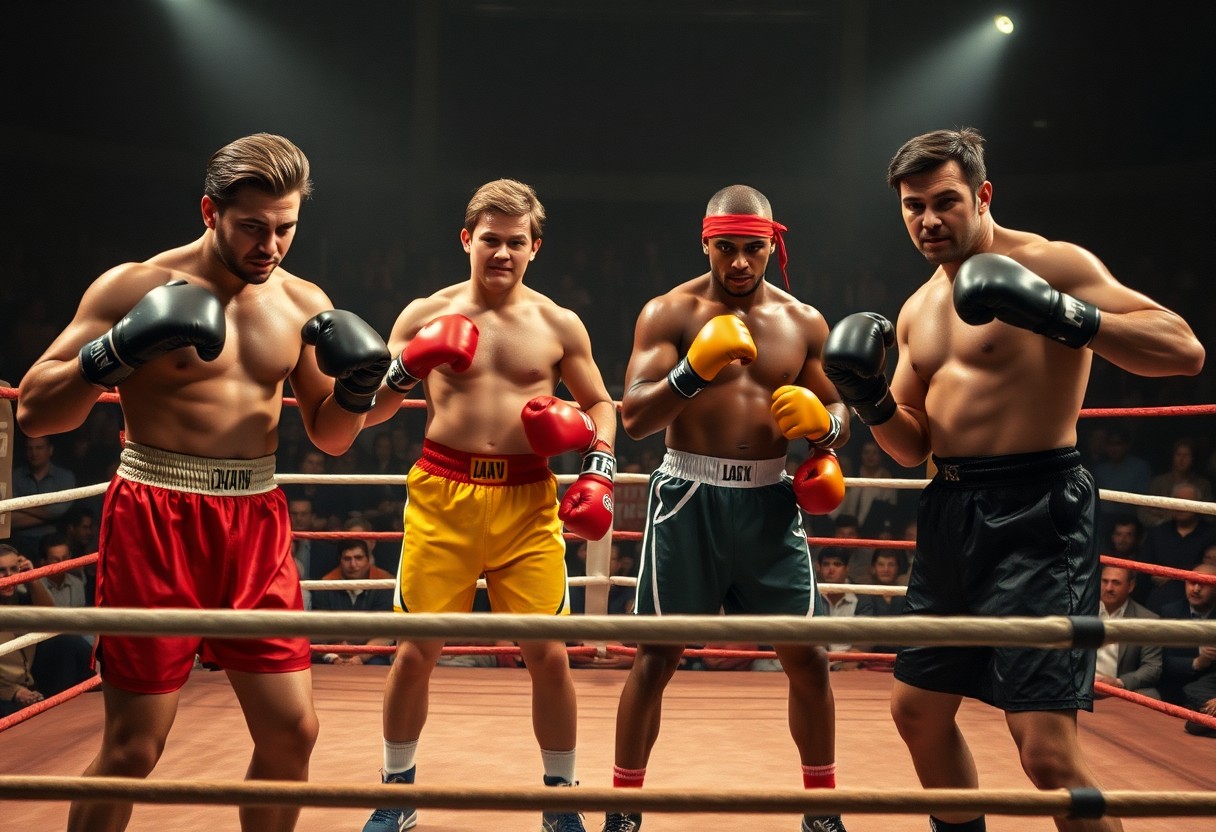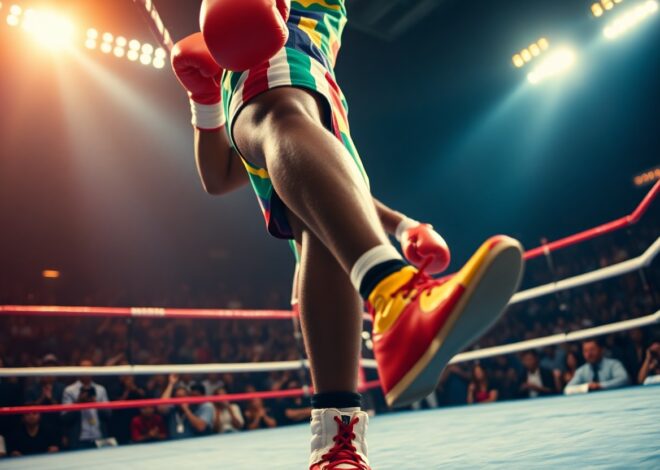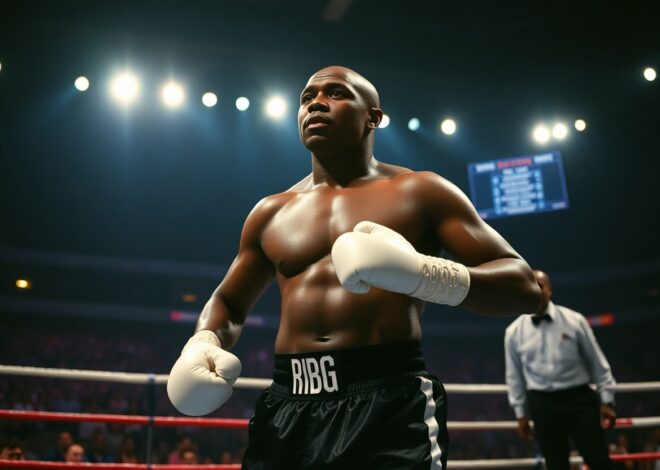
The Evolution Of Boxing Legends Through The Decades
Just as the sport of boxing has transformed over time, the legends who have graced the ring have continuously evolved, showcasing diverse styles, strategies, and cultural impacts. From the fierce rivalries of the past to today’s champion fighters, each decade has introduced iconic figures who shaped the trajectory of the sport. This guide explores the remarkable journeys of these fighters, highlighting their contributions, challenges, and the enduring legacy they leave within the world of boxing.
Types of Boxing Legends
Throughout boxing’s rich history, various types of legends have emerged, each leaving a profound impact on the sport. These legends can be categorized based on their weight classes, skill sets, and significant achievements. Their careers illustrate the diversity within boxing, showcasing talents that range from ferocious knockout artists to strategic tacticians. This classification aids fans in understanding the unique qualities that define boxing legends.
- Heavyweight Champions
- Lightweights
- Welterweights
- Female Boxing Legends
- Emerging Stars
| Type of Legend | Characteristics |
|---|---|
| Heavyweight Champions | Powerful fighters known for their knockout ability |
| Lightweights | Quick, agile boxers with technical prowess |
| Welterweights | Balanced combination of speed and strength |
| Female Boxing Legends | Trailblazers in a male-dominated sport |
| Emerging Stars | Fresh talents hinting at future greatness |
Heavyweight Champions
Heavyweight champions have historically captivated audiences with their immense power and larger-than-life personalities. Icons like Muhammad Ali and Mike Tyson not only showcased brute strength but also crafted their identities through charisma and match drama. These champions often face the highest levels of competition, leaving a lasting legacy within the sport.
Lightweights and Welterweights
Lightweights and welterweights are often seen as the heart of boxing, offering exciting matches characterized by speed, footwork, and technical skill. Fighters like Sugar Ray Leonard and Oscar De La Hoya have made their mark, dazzling fans with their combinations and tactics. The height of competition at these weight classes frequently leads to memorable bouts that redefine the sport.
The lightweight and welterweight divisions serve as a battleground for some of boxing’s most skilled fighters. Their bouts are not only fast-paced but often display a mix of finesse and strategy intertwined with raw power. Competing under the bright lights, these boxers embrace the challenge of each opponent, often leading to historic showdowns that elevate their status as legends. The success and recognition gained in these divisions contribute significantly to their legacies.
Female Boxing Legends
Female boxing legends have shattered barriers and inspired future generations through their tenacity and skill. Pioneers like Laila Ali and Christy Martin paved the way for the evolution of women’s boxing, showcasing their talents against the odds in a predominantly male sport. Their contributions have not only changed perceptions but have also elevated female athletes in combat sports.
The rise of female boxing legends reflects a significant transformation in the sport, with women now celebrated for their strength and athleticism. The establishment of professional titles and increased visibility has encouraged more women to enter the ring. Current champions such as Katie Taylor and Claressa Shields continue to build upon the foundation laid by earlier trailblazers, showcasing fierce competition that resonates across demographics and promotes equality in sports. Their journeys represent resilience and determination, influencing aspiring athletes worldwide to pursue their dreams in boxing.
Evolution of Boxing Styles
Early Techniques and Strategies
Boxing evolved from bare-knuckle fights in the 18th century, emphasizing powerful punches and basic footwork. Pioneers like James Figg showcased defensive maneuvers and aggressive tactics, relying on brute strength and stamina. Early fighters implemented the use of jabs and hooks while adhering to the principles of distance and timing, laying the groundwork for future techniques.
Modern Adaptations and Innovations
The sport has seen a shift towards more sophisticated techniques, emphasizing strategic footwork and defensive styles. Fighters now integrate elements from various martial arts, enhancing their adaptability in the ring. Training methods have evolved with technology, utilizing tools like data analytics and virtual reality for improved performance analysis.
Modern boxing styles incorporate advanced footwork, embodying concepts from dance and other sports, allowing athletes to evade strikes more effectively. Fighters like Floyd Mayweather exemplify a defensive approach that prioritizes elusiveness combined with strategic counterpunching. Moreover, the integration of scientific training techniques and nutrition strategies has enhanced fighter performance, reducing injuries and optimizing recovery times. Today’s boxers rely on detailed fight analysis and augmented training methods, creating a dynamic evolution in both styles and strategies that emphasizes adaptability and innovation.
Key Factors Influencing Boxing Legends
The journey of a boxing legend is shaped by several key factors that contribute to their enduring legacy. These components include training regimens, physical conditioning, and mental toughness, each playing a pivotal role in the development of a fighter’s strengths and skills. Legends are often defined by their ability to adapt and grow within the sport, making these elements foundational to their success. Recognizing these factors allows us to appreciate the complexities behind each champion’s journey.
Training Regimens
Effective training regimens are necessary for any boxer aiming for greatness. Legendary fighters often incorporate a variety of techniques, from cardiovascular workouts to strength training, ensuring a well-rounded approach. This includes drills that enhance speed, agility, and endurance, tailored to each athlete’s unique needs.
Physical Conditioning
The importance of physical conditioning cannot be overstated in boxing. Champions like Muhammad Ali and Floyd Mayweather Jr. exemplified exceptional physical fitness, allowing them to perform at peak levels. Rigorous conditioning not only builds strength but also supports recovery and injury prevention.
Physical conditioning involves systematic strengthening of muscles, developing specific skills, and enhancing overall endurance through targeted workouts. Boxers engage in diverse training activities, including roadwork, sparring, and high-intensity interval training (HIIT) to achieve optimal performance. Champions often undergo intense schedules that include multiple training sessions daily, maximizing their abilities to withstand the grueling demands of each match.
Mental Toughness
Mental toughness is a decisive factor in a boxer’s success and is often what separates a champion from the rest. Legends like Mike Tyson demonstrated exceptional mental resilience, allowing them to overcome adversities and thrive under pressure. This psychological strength often develops through experience, facing opponents, and handling setbacks.
Boxers cultivate mental toughness through mental conditioning techniques, visualization, and self-discipline, which prepare them for the high-stakes environment of the ring. The ability to maintain focus and composure, even in the face of adversity, leads to more effective decision-making during fights, ultimately contributing to their lasting legacies.
Tips for Aspiring Boxers
For those commenceing on a career in boxing, dedication and discipline are key. Focus on these vital aspects:
- Training regimen – Consistent workouts focusing on strength, agility, and endurance.
- Nutrition – Fuel your body with balanced meals to optimize performance.
- Mental toughness – Cultivate confidence and resilience through mindset exercises.
- Understanding technique – Master the fundamentals and footwork to enhance your style.
Knowing these elements will help you excel in the ring.
Essential Skills to Develop
Aspiring boxers must hone specific skills to become successful fighters. Emphasizing footwork, defensive techniques, and punching accuracy will enhance your overall performance. Practicing these skills regularly builds muscle memory and ensures effective execution during matches.
Importance of Coaching
Effective coaching is foundational for any aspiring boxer. A knowledgeable coach can provide tailormade training programs, constructive feedback, and strategies that align with your strengths. Their experience helps identify areas for improvement, fostering an environment for growth.
With the right coach, boxers can navigate the complexities of the sport more efficiently. They can help establish both short-term goals and long-term visions vital for sustained progress. A credible coach also emphasizes safety and the importance of a disciplined approach to training, ensuring that fighters develop techniques gradually while minimizing the risk of injury.
Practicing Sparring Techniques
Sparring is an invaluable part of a boxer’s training routine, allowing individuals to practice their skills in a controlled environment against a live opponent. Regular sparring sessions enhance timing, accuracy, and adaptability in the ring.
Engaging in sparring with various partners not only sharpens technical abilities but also helps boxers develop strategic thinking and resilience under pressure. Experimenting with different styles during practice can yield insights into effective counterattacks and defense, ultimately preparing fighters for real match scenarios.
Pros and Cons of Different Boxing Eras
| Pros | Cons |
|---|---|
| Heightened competition led to skill development. | Inconsistent regulations and safety protocols. |
| Increased media exposure created legends. | Promotional influences could overshadow talent. |
| Pioneering athletes pushed physical limits. | Steroid use and other performance-enhancing issues. |
| Affordable access to fights for fans. | Pay-per-view models have limited accessibility. |
| Inspiring stories of perseverance and struggle. | Commercialization may dilute the sport’s integrity. |
| Innovations in training and recovery methods. | Over-scheduling can lead to burnout in fighters. |
| Diverse fighting styles enrich the sport. | Risk of mismatch bouts for profit. |
| Strong community support and fan engagement. | Violence in the sport can attract criticism. |
| Evolving weight classes improve fairness. | Controversial decisions can mar legacy. |
Golden Age of Boxing
The Golden Age of Boxing, spanning the 1920s to the 1960s, is often regarded as the pinnacle of the sport. This era produced legendary figures such as Joe Louis, Rocky Marciano, and Cassius Clay, who not only showcased unparalleled athleticism but also captivated audiences worldwide. Major fights were broadcast on radio and later television, making boxing a central part of American culture. Despite its greatness, this era faced challenges like racial divisions and limited international exposure compared to modern standards.
Modern Era and Its Challenges
The modern era of boxing presents both exciting advancements and significant challenges. Globalization has made the sport more accessible, allowing fighters from diverse backgrounds to compete on the world stage. However, the focus on mega-fights often prioritizes financial gain over authentic competition. Pay-per-view revenue has created an environment where the biggest draws dominate, often at the expense of rising stars. Additionally, with issues like performance-enhancing drugs and health concerns from prolonged careers, the sport’s integrity faces greater scrutiny than ever.
Moreover, the modern era sees an influx of new fighting styles influenced by mixed martial arts, creating dynamic yet unpredictable bouts. Training has drastically evolved, integrating technology and advanced analytics, which can enhance fight preparations. Despite these positives, boxers often grapple with intense promotional pressure and the expectation to maintain a perfect record, leading to reluctance to take significant risks in the ring. The balance between entertainment and athleticism remains a complex and ongoing dialogue within the sport.
Step-by-Step Guide to Training Like a Legend
| Training Component | Details |
|---|---|
| Setting Up a Training Schedule | A well-structured schedule is important, focusing on both technique and conditioning. Aim for at least 5-6 days a week of training, alternating between heavy bag work, sparring, conditioning, and rest days. |
| Nutrition and Recovery Essentials | Proper nutrition and recovery are vital for performance; consider a balanced diet rich in lean proteins, complex carbs, and important fats, along with adequate hydration. |
| Progress Tracking and Goal Setting | Keep a detailed log of your workouts and nutrition; set realistic short-term and long-term goals to measure your progress effectively. |
Setting Up a Training Schedule
Creating a training schedule involves balancing various elements of boxing, such as technique, strength, and endurance. Incorporating strength training on some days and sparring on others helps to develop different skills while allowing for recovery in between sessions.
Nutrition and Recovery Essentials
Nutrition plays an integral role in a boxer’s performance, fueling the body for intense training sessions. A focus on hydration, along with meals consisting of whole foods, can significantly aid in recovery and overall stamina.
Emphasizing a diet rich in fruits, vegetables, and high-quality proteins helps optimize both energy levels and muscle repair. Post-workout recovery should include protein and carbohydrates for replenishment, alongside practices like stretching and proper sleep routines to ensure the body repairs itself efficiently.
Progress Tracking and Goal Setting
To train effectively, it’s important to monitor your progress through targeted metrics such as weight, stamina, and skill improvements. Setting SMART (Specific, Measurable, Achievable, Relevant, Time-bound) goals can elevate training outcomes and motivate performance.
Analyzing daily, weekly, and monthly performance grants insight into areas needing improvement. A journal or app can aid in tracking accomplishments, while regular assessments will keep your goals aligned with your training regimen, ensuring continuous progress and adaptation.
Summing up
Following this examination of the evolution of boxing legends through the decades, it is evident that the sport has been shaped by remarkable athletes whose diverse styles and personal stories have left a lasting impact. Each era has contributed unique figures, techniques, and narratives that reflect broader societal changes. Understanding these legends not only enriches our appreciation of boxing but also highlights the sport’s ongoing transformation and its ability to inspire future generations of fighters and fans alike.
FAQ
Q: How has the training regimen for boxers evolved over the decades?
A: Training for boxers has progressed significantly, with early fighters relying on basic strength and stamina workouts. In recent decades, training now incorporates advanced sports science, nutrition, and psychological coaching, enabling athletes to optimize performance and reduce injury risks.
Q: What role has technology played in the evolution of boxing?
A: Technology has transformed boxing through improved equipment, such as high-tech gloves and protective gear, along with advanced analytics for performance tracking. Innovations like video analysis and virtual reality training have also enabled fighters to refine their techniques and strategies more effectively.
Q: How have boxing styles changed throughout the years?
A: Boxing styles have evolved from the brawlers of the early 20th century to the more technical and strategic approaches seen today. Modern fighters often adapt hybrid styles that blend power, agility, and skill, influenced by various martial arts, enhancing the sport’s overall competitiveness.



